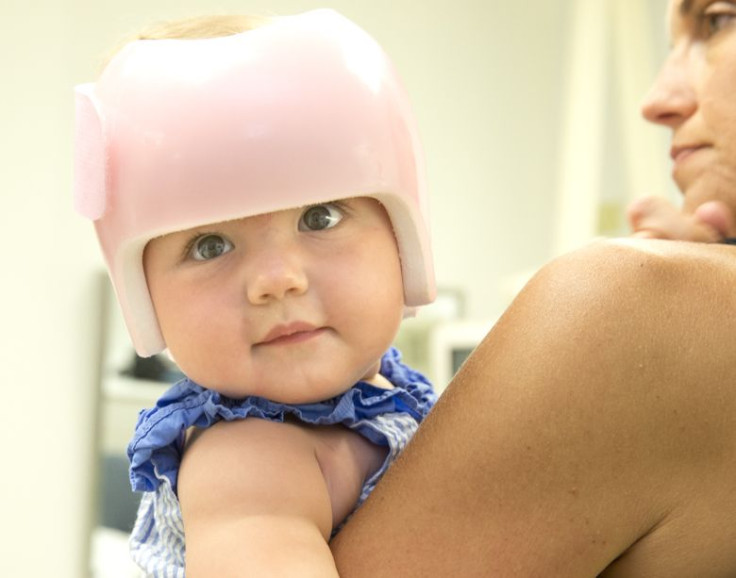Helmet Therapy Does Not Reduce An Infant's Risk Of Developing Positional Skull Deformities, So Why Use It?

Fetal conditions such as positional skull deformity, also known as plagiocephaly, have become more common since the advent of campaigns aimed toward reducing the risk of sudden infant death syndrome (SIDS) by laying newborns on their back before bed. A recent study out of the Netherlands has revealed that helmet therapy used to decrease an infant’s likelihood of developing a skull deformity has little to no effect on this condition.
“Based on the effectiveness of helmet therapy, and the high prevalence of side-effects and high costs, we discourage the use of a helmet as a standard treatment for healthy infants with moderate to severe skull deformation,” authors of the study said in a statement.
Researchers involved with the HEADS study included 84 full-term babies in good health who had begun to develop moderate to severe positional skull deformation. Infants were either affected by plagiocephaly, which causes misalignment of the ears and one side of the head to flatten, or brachycephaly, characterized by a bulge in the front of the skull and a flattened back of the head. Half of the babies were given no form of remedial therapy while the other half were fitted with specially designed helmet that they wore 23 hours a day for six months.
At the age of 2, the research team measured each child’s head and rated their parents’ satisfaction with their skull shape. Of the babies who participated in helmet therapy, 25.6 percent experienced a full recovery by the time they turned 2, compared to 22.5 percent of the babies who had no treatment at all. Parents whose babies wore a helmet reported an average satisfaction score of 4.6 out of 5, compared to 4.4 reported by parents of babies who received no treatment.
Not only did helmet therapy have a similar effect on reducing a child’s risk for skull deformities compared to non-treatment, but parents of the infants that wore helmets reported certain side effects, including skin irritation, inability to cuddle with their child, odor, sweating, and pain. The fact that only a quarter of the babies included in this study experienced a full recovery shows that prevention methods require more attention. Around one in five infants develop a skull deformity due to lying in one position for an extended period of time.
"Parents would want to know whether treatment would result in improvements above and beyond what would be expected by doing nothing at all,” Professor Brent Collett from the University of Washington School of Medicine said in an accompanying editorial. "It would be of interest to learn whether children with the most severe PPB (positional plagiocephaly and brachycephaly), who were excluded from this trial, show meaningful improvement. Additional work incorporating behavioral and public health strategies to promote 'tummy time' and similar positioning strategies should be explored."
Source: van Wijk R, van Vlimmeren L, Groothuis-Oudshoorn C, et al. Helmet therapy in infants with positional skull deformation: randomised controlled trial. BMJ. 2014.
Published by Medicaldaily.com



























